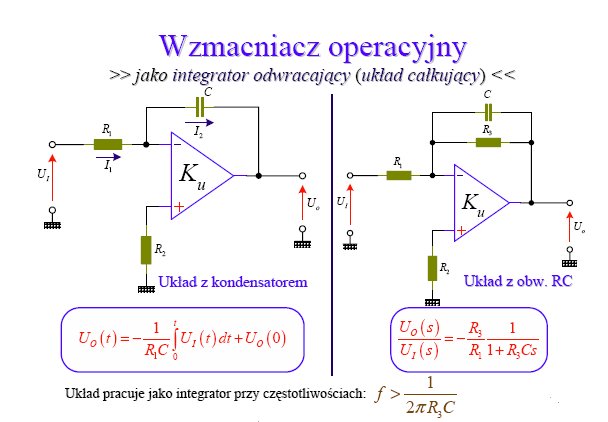The type of feedback in an operational amplifier is distinguished by the schematic diagram.
When the feedback signal is fed to the inverting input II (fig1) we are dealing with negative feedback (Negative feedback occurs when the phases of the input signal and the feedback signal are opposite)
And positive when the feedback signal is fed to the non-inverting input NI (fig2).
When it comes to b = R2/(R1+R2) is the same for both amplifiers.
And now an abbreviated analysis of how both couplings work.
Negative coupling seeks to maintain a state of equilibrium.
Let's assume that our amplifier operates in slow motion.
I apply to the input U1= –1V.
This voltage appears at the inverting input II divided by the voltage divider R1,R2. The amplifier will immediately be driven in the direction of positive voltages.
With an output voltage of Uo=1V, the voltage difference between the non-inverting input NI and inverting input II is Ud=0V, and in this state the amplifier will stop. If the voltage at the output of WO exceeded 1V, there would be a change in the sign of the voltage Ud ( the difference of voltages between the inputs Ud=NI-II) and so for Uo=1.2V and U1=-1V we have Ud=-0.1V, which means that the amplifier sees on its inverting input 0.1V, so the output voltage will be driven back towards 1V. As you can see, the negative feedback seeks to maintain a state of equilibrium.
And now the positive feedback which increases the gain.
Let's look at the situation for an input voltage Uwe=0V and answer the question of whether it is possible for the output to maintain a state of equilibrium then, i.e. Ud=0 and Uwy=0V.
Let's regret that due to some interference a voltage of 1V appears at the output of the amplifier. This causes the voltage resulting from the division of Uwy on the voltage divider to appear at the non-inverting input. This voltage has the same phase as Uwy and is multiplied by a very large value A of the amplifier. If the output voltage deviated from zero in the direction of positive voltages then Uwy continues to rise and will reach the maximum possible value, that is, the WO enters positive saturation, e.g. Ucc=15.
We can see that the appearance of a non-zero voltage at the output causes the appearance of a voltage of the same phase at the non-inverting input (0.5V ) which will further increase the output voltage and therefore the imbalance condition deepens.
The output voltage will almost momentarily reach the maximum possible value, that is, the supply voltage Ucc=15V which means that the voltage at the NI input will be 7.5V.
Changing the voltage at the input II in the range of Uee to 7.5V does not change anything in the circuit
Only when the voltage at the input II exceeds 7.5V the circuit will momentarily change state and Uee=-15V will appear at the output. And why will this happen only when 7.5V is applied to the input ??
I'm curious if you know why this will happen ?
When it comes to the generator, see here
https://www.elektroda.pl/rtvforum/topic385971.html#1954340 We have there an inverting amplifier with a gain KU=-(R1+R6)/R2=49V/V and a system of three high-pass filters connected in cascade.
For the system to become a generator we must meet two conditions.
1. amplitude condition, which requires that the gain of the amplifier times „loop gain” is 1, so that the input and output of the amplifier is the same signal.
2. phase condition, which says that the phase has to be equal to 0 or n*360 where n=±1,±2...
Which translates to peasant words. The reason is that on both sides of the amplifier we are supposed to have a voltage of identical amplitude (amplitude condition) and phase (when the voltage at the output increases, the voltage at the input should also increase)
As we know, an inverting amplifier reverses the phase by 180 degrees, so the task of this RC filter is to shift the phase by another 180 degrees. And what is important, this filter shifts the voltage by 180 degrees only for one specific frequency. That is, we have the phase condition fulfilled.
Because the attenuation introduced by the RC filter is 1/29
in this circuit, and to generate oscillations the whole circuit must have a gain greater than 1 so
the operational amplifier has additional elements added that provide
local gain slightly greater than 29. attenuation value (often labeled β)
and the gains multiply - the whole thing has a gain > 1 and then it happily oscillates.
These diodes are for amplitude stabilization and when the amplitude reaches 1V they reduce the gain of the amplifier to 29V/V.
Uff a little bit of this.

How to get to the rest of this course, this is the first part and is there the rest ?
